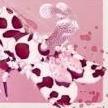Feature Article: Spectral Data from a Shallow Hawaiian Tidepool
-
Topics
-
Latest Update
-
1
-
1
Decomm Sales
1) Red Cyna - $60 2) Orange Lobo Brain - $25 3) Rainbow Acan - $35 4) Red Blasto - $15 5) Tube Blasto - $20 6) GMK Frag - $80 7) Green Candy Cane (Big) - $80 8) Green Candy Cane (Small) - $20 / $10 9) Green Hammer - $30 10) Green Frogspawn - $35 11) Small Frag (Dunno what name) - $15 12) True Percula Clown (Pair) - $150 13) Tailspot Blenny (Pellet eating) - $20 14) Emerald Crab - $15 each 15) Astrea Snail x3 - $10 Collection at Sembawang Tankset: IM 10 Gal Tank Set with Black Cabinet - Desktop Skimmer - AI Prime HD Light - Teco 150 Chiller - 3 piece LR with Coraline Algae $700 Collect at sembawang -
0
LF Zero RODI Filter media
Looking for ZERO RODI filter media. Pls PM the type media carbon or membrane and your location. Cheers Daniel -
215
WTS live rotifers, tigger pods, phyto
Ups. Tele me at littlefishaqua Sent from my 22101316G using Tapatalk -
0
HIRE A RECOVERY EXPERT
It's very shameful indeed. It still feels to me to fall for some swindlers online who stole $13,500 BTC from me and blocked me. I tried all the seemingly reasonable recommendations I got and nothing worked until I saw Space Spy Recovery's response. I had missed it as their email came in my spam folder and immediately I followed up by providing requested data and they were able to track the transaction and my money returned. You can contact them too for assistance through Email: at soacespy@hackermail.com WhatsApp: https://wa.me/message/CYFT7C6HPEIGA1 Telegram: @spacespy65 Skype: live:.cid.2b75b0cf1ce9bf69 Website: https://soacespy.wixsite.com/my-site-2 website: https://spacespyrecovery.pro/ Youtube: https://youtu.be/m8DDfVwc_lE
-








Recommended Posts
Join the conversation
You can post now and register later. If you have an account, sign in now to post with your account.